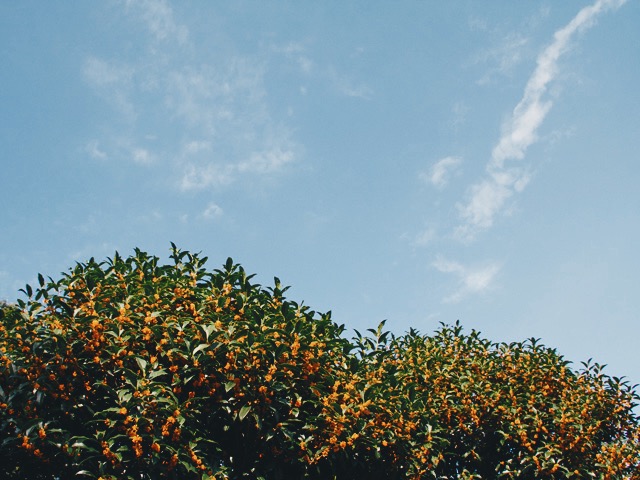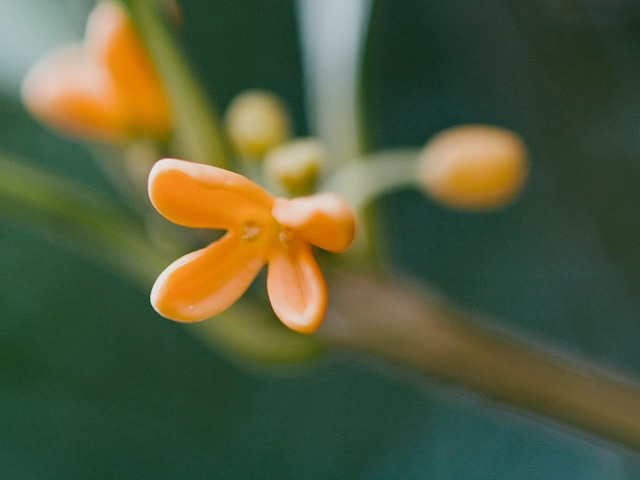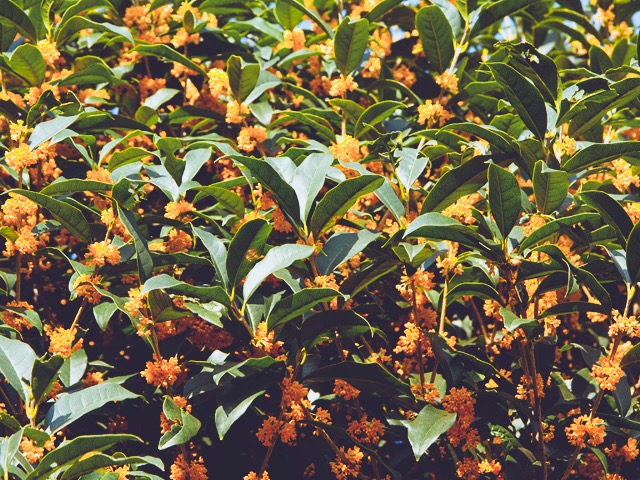Limited time! Feel Japan’s autumn – a scent of “osmanthus fragrans”
Contents
By speaking of Japanese flowers, many people think about the in spring blooming Sakura (cherry blossom). This time we introduce you a flower that has no reason to hide behind the famous Sakura. It is the for Japanese autumn-season indispensable osmanthus fragrans.

When the cicadas are not longer to hear, and it becomes slightly cooler, it is the end of September in Japan. The fragrance of flowers that are still blooming is nearly everywhere in the air. The representative of Japan`s Autumn osmanthus fragrans can be found at many places.

Osmanthus fragrans looks like small sugar candy (orange color) and has a sweet but slightly smoky scent. At places where many flowers are gathered, it is a quiet spectacular thing for eyes and nose. For Japanese, the smell of osmanthus fragrans means the end of summer and the arrival of autumn. It is said to be the most familiar scent to be for Japanese.
In gardens and parks all over Japan, it is often planted as an ornament. Besides Sakura (cherry blossom) osmanthus fragrans is nationwide famous and an important part of Japanese culture.
Recently, sugar sweets, Shochu (with orange and other fruits mixed) and other liqueurs become popular. The fragrance can`t be produced artificially and that’s why perfumes of osmanthus fragrans can`t be produced.

In the language of flowers, osmanthus fragrans has the meaning of “humility” and “euphoric”. One of the special things about this flower is the strong scent in relation to the flowers small size. Another one is that the leaves immediately fall of when it is raining.

As quickly as osmanthus fragrans appears, as quickly it disappears again. This is a real “limited time experience” for everyone. So, why don`t you go to a near park and watch these symbol of Japanese autumn?
Osmanthus fragrans blooming period
End of September to mid-October
Best spots for watching
・Ohori Park
・Fukuoka Botanical Garden
・Kego Shrine
・Aburayama shimin no mori
*It is often planted in private house gardens and along road. Stroll around and enjoy it at various places.
